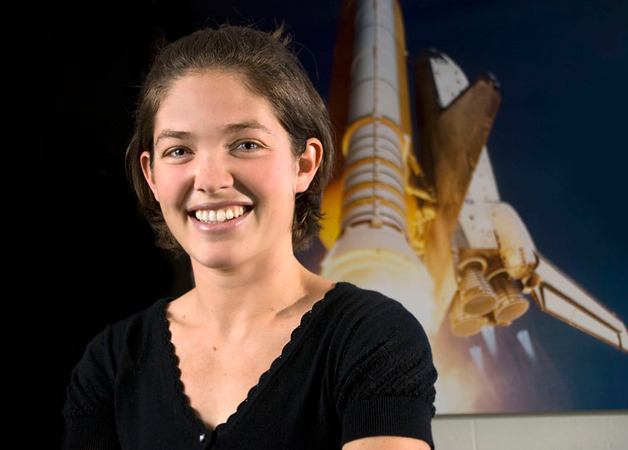A South Whidbey grad is one of the scientists who recently observed gravitational waves, confirming a major prediction of Albert Einstein and deepening the world’s understanding of the cosmos.
Joey Shapiro Key, 36, was among the 1,000 scientists, engineers, and graduate students who made the landmark discovery announced earlier this month — a story that has made headlines around the globe. Naturally, she’s pretty excited about the breakthrough.
“It’ll be the biggest discovery of our lifetime,” Key said.
Key is a research assistant professor and director of education and outreach for gravitational wave astronomy at the University of Texas Rio Grande Valley, having also earned a Ph.D from Montana State University.
She and her colleagues were alerted of the finding on the morning of Sept. 14, 2015 when two L-shaped Laser Interferometer Gravitation-wave Observatory (LIGO) detectors in Hanford, Wash. and Livingston, La. picked up faint signals of two black holes colliding 1.3 billion years ago in a distant galaxy.
The detectors are essentially a telescope, but instead of using light to observe the universe, they detect ripples in space-time caused by cataclysmic processes, such as supernovas, and the tiny disturbances the waves make as they pass through the earth. Her primary job with LIGO was analyzing data from the waves discovered by the detectors. Key said the discovery serves as both a triumph for technology but also the human spirit, which has an innate thirst for knowledge and its origins. Popular science figures Stephen Hawking, Neil DeGrasse Tyson and Michio Kaku have all spoken out about the positive implications the discovery will bring to humanities’ understanding of the universe. DeGrasse Tyson said there is a strong possibility that the breakthrough will lead to a Nobel Prize in 2016 for LIGO’s founders Kip Thorne, Rainer Weiss and Ronald Drever.
Though Key has been aware of the findings since September, she had to keep it under wraps until it was officially announced on Feb. 11. Her parents, Steve Shapiro and Debora Valis of Langley, weren’t even privy to the information, though Key’s husband hinted about the discovery in December. A few days before the announcement, Key sent them a weblink to where they could view the press conference online. They’ve discussed it in depth since.
“Obviously, it’s very cool,” Shapiro said. “I can’t say that I think more of her as a result, I’ve always thought very well of her. The fact that she’s in her mid-30s and gravitation wave astronomy is just opening up, and the fact that it confirms Einstein’s theory and proves gravitational waves are two huge things.”
Key’s parents remembered their daughter’s passion for the wonders of space caught on at a very early age. The family traveled to Griffith Observatory in Los Angeles to watch Halley’s Comet pass over the earth. When it was time for questions and answers, Key was the only child present to stand up and ask a question.
Shapiro, a 1997 graduate of South Whidbey High School, took physics, astronomy and mathematics with Mark Racicot, now a retired teacher, at the high school. Racicot has followed her career over the years and was thrilled to see her most recent achievement. He sent Key an email shortly after the announcement congratulating her.
“She’s been engaged in the study of space time and the structure of the universe, and for me it’s just fascinating,” Racicot said. “I’m real proud of her.”
Racicot and Key had teamed up to create an independent study course in Advanced Placement calculus. Racicot said she was exemplary in her work ethic and performance, acing every test she took. He was excited to see Key choose the route which she did, as Racicot finds the field to be fascinating.
“She’s right up there with a lot of very difficult, complex studies,” Racicot said. “The fact that she chose that is just what she loves apparently. She is engaged at the top of her field and that’s exciting right there.”
Sharing news of the discovery to the world was difficult work for Key, who said she’s been challenged by coordinating effective ways to spread the information via social media, blogs and other outlets.
Though the accomplishment is a huge milestone in her career, her work with LIGO is far from finished. She is part of a team which analyzes the gravitation wave data using fewer assumptions about what has previously been detected. For example, instead of assuming the waves derived from two stars merging, Key will look at the structure of the signal in both detectors and mathematically characterize them. The wave signals come in the form of white noise and chirps.
“Eventually, someday, we’re going to get signals that we don’t expect,” Key said. “So we need pipelines, like ours, that look for bursts of power, or bursts of signals that we don’t necessarily know what to expect for the structure, but that they somehow have a way to characterize it.”
“It’s going to give us a new map of what is out there in the universe,” she added.



